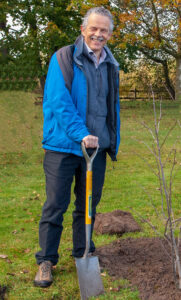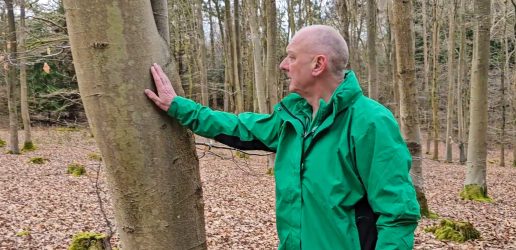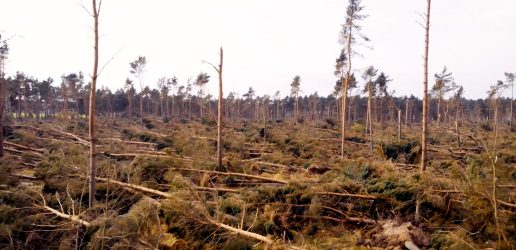Chris Quine has recently been made a Fellow of the Royal Society of Edinburgh. To celebrate this achievement, Chris spoke to us about what this recognition means to him. He also tells us of his time at Forest Research, gives advice to those considering a career in scientific research and shares his thoughts on the future of forest science.

‘Chuffed!’ would be one way of summing up how I feel about becoming a Fellow of the Royal Society of Edinburgh. Why so? I feel honoured to have been recognised in this way – nominated by my scientific peers and then selected in a competitive ballot by the existing fellowship of Scotland’s national academy, which spans many areas of expertise.
There have been experts in forest sciences within the RSE in recent decades, but only from academia. The last fellow from the Forestry Commission was George D Holmes (a former Director General of the Forestry Commission who retired in the mid-1980s). It also recognises the possibilities afforded by careers in Forest Research, reflecting the progress we have collectively made in recent years in raising the profile, relevance and breadth of our research. The RSE’s strapline is ‘Knowledge made useful’ and having worked for Forest Research, unashamedly an applied research organisation, for most of my career, this seems highly appropriate.
Forest Research has provided me with some fantastic opportunities since I joined as a junior project leader to study the effects of strong winds in causing windthrow and how to minimise such damage. I arrived at NRS (FR’s Northern Research Station) having spent 5 years in forest management in south Scotland, to what was regarded as a specialist tour (perhaps now it would be called a development opportunity!).
A few years in, I became convinced that research was the career for me. To equip me for such specialism, I was sponsored by FR to do a part-time PhD with Edinburgh University. This provided a springboard for the research and research management I’ve done since. I’ve been incredibly fortunate to work alongside some great colleagues across many scientific disciplines. I’ve collaborated with folk in many different organisations, engaged in some crucial topics, and helped Forest Research to adapt to ever changing circumstances (including times when our very existence was threatened).
I’d certainly recommend a career in applied research, and specifically research related to trees, woods and forests. What do you need? Adaptability is a great start – but perhaps the core characteristics are curiosity, commitment (not all research is exciting), community (a willingness to contribute to many teams), and communication (by which I mean very much an interest in the exchange of knowledge not the megaphone knowledge transfer version).
Currently there are unprecedented opportunities afforded by public and political interest in trees, woods, and forests. The bold plans to expand woodland cover and protect and restore forests within the UK and overseas requires underpinning with sound evidence, multiple ways of supporting decisions (whether in policy or practice), and skilled people. I hope the welcome recent upturn in funding for tree-related research is sustained so that our understanding can grow – providing exciting and fulfilling careers for many more forest scientists.
Tree professionals working in arboriculture are being asked to take part in a new tree health survey as part of a DEFRA-funded project looking at pathways and practices concerning the tree disease, canker stain of plane.

Nature, the world’s leading multidisciplinary science journal, has published findings from a new global study investigating which tree species fix the most carbon.

Forest Research have released a new video about the increasing risks of wind and storms and ways to mitigate their damage, including by using ForestGALES.
Tree professionals working in arboriculture are being asked to take part in a new tree health survey as part of a DEFRA-funded project looking at pathways and practices concerning the tree disease, canker stain of plane.

Nature, the world’s leading multidisciplinary science journal, has published findings from a new global study investigating which tree species fix the most carbon.

Forest Research have released a new video about the increasing risks of wind and storms and ways to mitigate their damage, including by using ForestGALES.